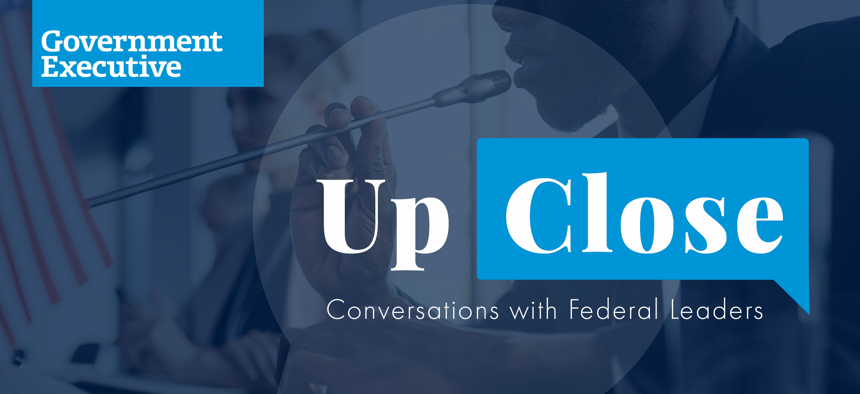Up Close: Conversations with Federal Leaders, Featuring NIH Associate Director Dr. Susan Gregurick
Dr. Susan Gregurick, NIH associate director of data science, sits down with Nextgov Senior Editor Aaron Boyd.
In times of crisis—like the current COVID-19 pandemic—medical innovations have to move at the speed of the virus instead of the traditional research timeline. In order for that to happen, researchers need access to timely, standardized data, and they need it all in one place.
That’s one of a number of efforts spearheaded by Dr. Susan Gregurick, associate director for data science at the National Institutes of Health and head of the relatively new Office of Data Science Strategy, launched in 2018.
In this one-on-one interview with Aaron Boyd, senior editor of technology and events at Nextgov, Gregurick talks about how the clinical research community is banding together to combat the pandemic and how data scientists are working to get them the data they need to be successful.
In the half-hour conversation, Gregurick talks about finding an “honest broker” for the National COVID Cohort Collaborative, or N3C; enabling single sign-on for researchers to access multiple relevant databases at once; ensuring patient privacy without slowing critical research; and the tools being developed now to combat the next pandemic.
While major innovations are cutting down development times for new therapeutics, vaccines and diagnostics tools, Gregurick said she expects data science to make significant leaps forward, as well.
“In data science, some interesting innovation is coming through truly making our platforms actually interoperable. This is because folks are dedicated to this and are working long hours building on existing platforms to make truly interoperable, at-scale resources,” she said. “Then, in the future, we’re going to see some pretty cool innovations in terms of how people aggregate and analyze data, how they develop new AI tools. … I think that we’re going to see new innovations in the analysis of data because we’ve made so much data available in such a short period of time.”
View the interview in its entirety below.
NEXT STORY: GovExec Daily: The State of the 2020 Census








